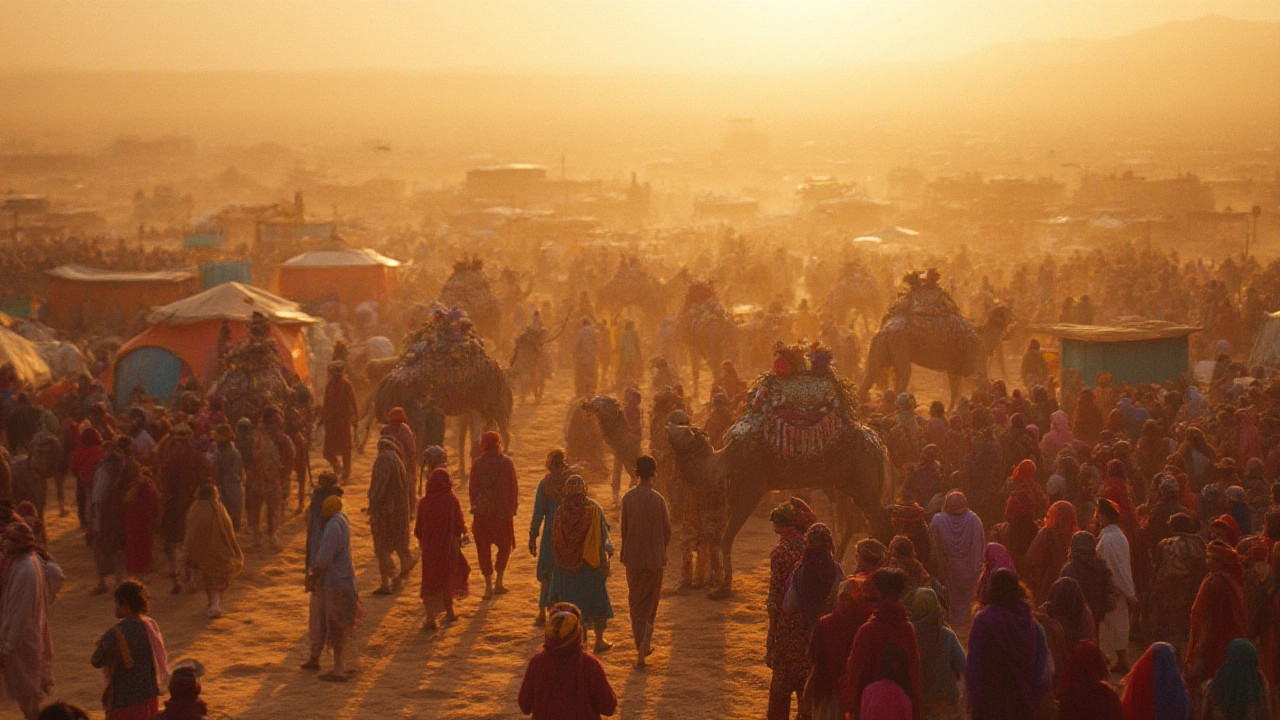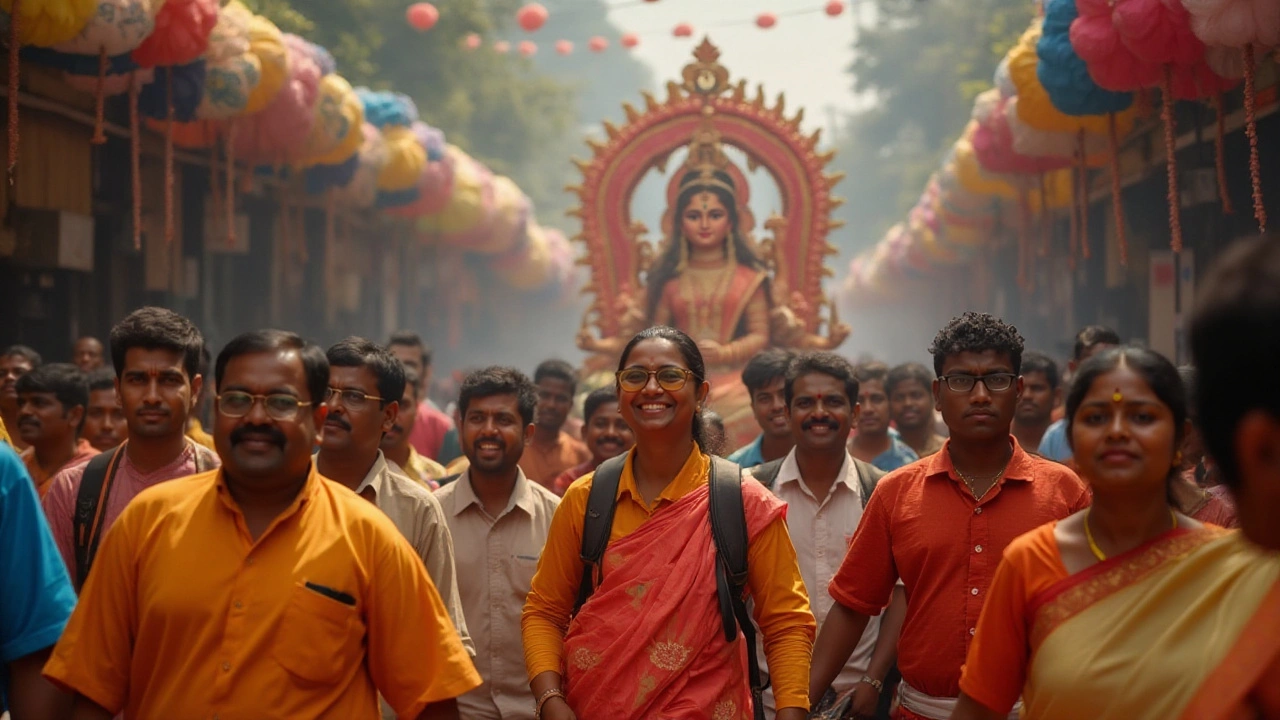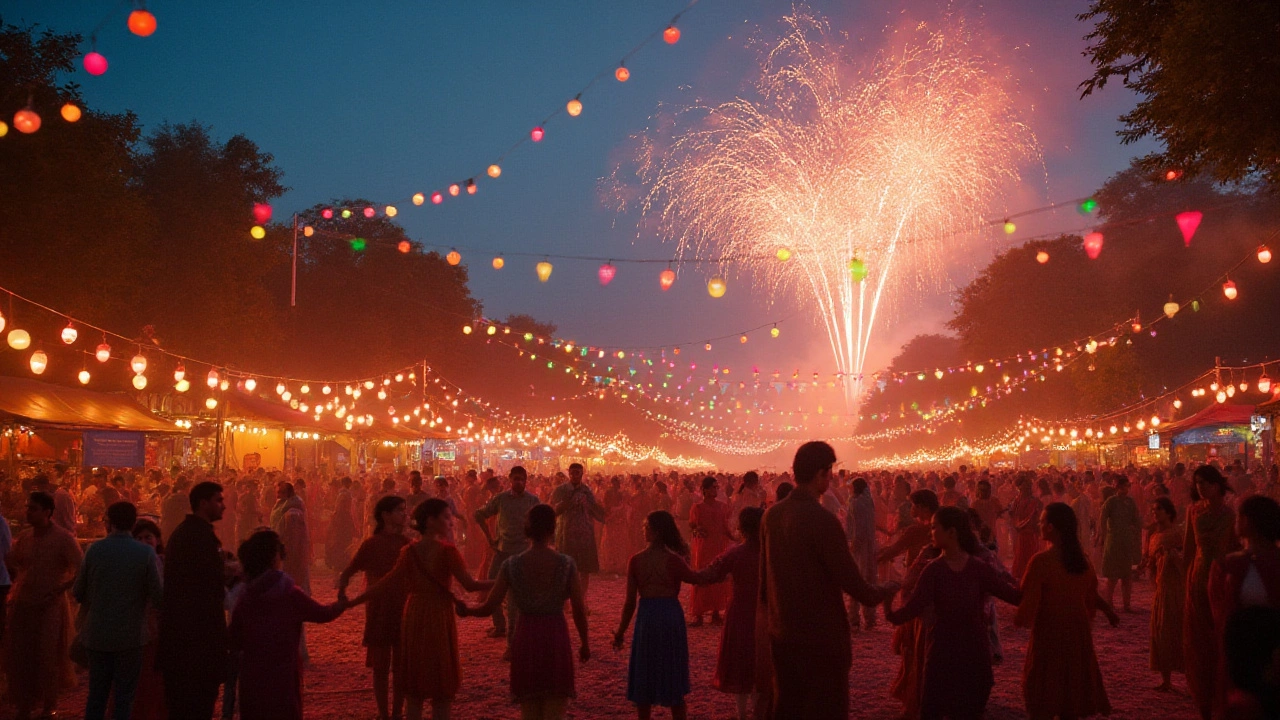
How Many Official Festivals Are There in India? A Complete Breakdown
India has only three national festivals as official public holidays, but over 50 state-level and 500+ religious festivals are celebrated nationwide. Discover which ones are officially recognized and how culture shapes India’s festive calendar.

India's Most Unique Festival: Discovering the Magic of Pushkar Camel Fair
Explore India’s most unique festival—the Pushkar Camel Fair. Learn about its traditions, quirky events, eye-popping sights, true stories, and why it stands out in the Indian festival scene.

Discover the Vibrant 10-Day Durga Puja Festival in India
Durga Puja is an exhilarating 10-day festival celebrated across India, especially in West Bengal. It honors the victory of the goddess Durga over the demon Mahishasura, featuring vibrant rituals, elaborate decorations, music, and food. This article guides you through the fascinating traditions, historical roots, and significance of this cultural extravaganza. Learn about the festival's day-by-day events and some travel tips for experiencing the festivities.

Exploring India's Most Celebrated Festival
India, known for its vibrant tapestry of diverse cultures, is home to a myriad of festivals. These celebrations embody the country's rich heritage and bring joy to millions. Among these festivals, there's one that stands out as the most beloved and celebrated across the nation. This article delves into the essence of Indian festivals and examines which could be considered the king of them all.